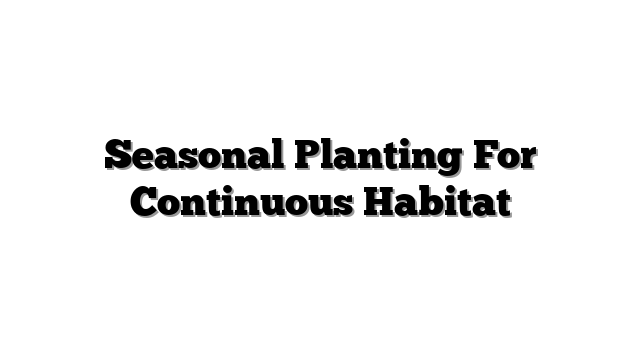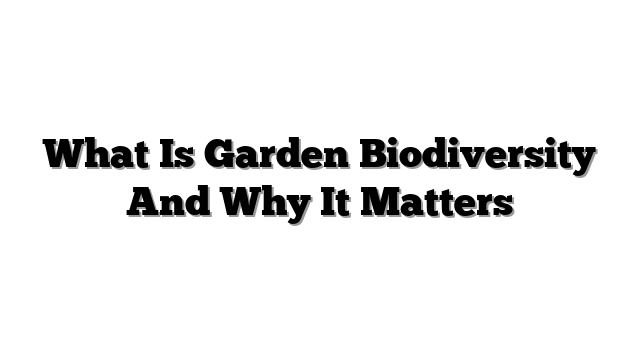Using Hedgerows And Buffer Strips
Want more privacy? Need less wind? Tired of muddy water?
Many yards face these problems. My yard did too.
What if one simple idea fixed them all? It can.
We talk about Using Hedgerows and Buffer Strips today. They are long plant lines. Think of them as green walls.
These green walls help your yard. They help nature too. This guide helps you use them.
We look at their big benefits. Learn how to plan them. Pick the best plants. See how to plant and care for them.
Let’s make your yard better. Let’s make it green.
What Exactly Are Hedgerows and Buffer Strips? Defining These Essential Landscape Features
These are not just random plants. They serve a real purpose.
They create needed green space. They work hard for you.
Defining Hedgerows: More Than Just a Living Fence
Think old farms. Farmers used hedgerows. They marked land. They kept animals in. They were a living fence.
Today they do more. They block views. They stop strong winds. They give homes to animals.
A hedgerow is a line of plants. Often it uses many plant types. Shrubs and small trees mix. They grow close together. This makes a thick barrier.
They follow a line or border. Maybe your property boundary. They look natural.
Defining Buffer Strips: The Protective Green Zones
Buffer strips protect things. They use plants to do it. They often guard water.
They stop dirt from washing away. This is erosion control planting. They clean water runoff. Dirty water flows through plants. Plants grab dirt and chemicals. This makes water quality better.
Buffer strips sit next to water. Streams, lakes, or ponds. These are riparian buffers. They can sit by fields too. We call these field borders. They might be shelterbelts stopping wind. Or a vegetative filter strip.
They vary in how wide they are. It depends on their job. They are a conservation practice.
The Key Differences and Overlaps
Hedgerows often focus on borders. They give privacy. They block wind.
Buffer strips focus on protection. They clean water. They stop dirt loss.
Both use lines of plants. Both help nature. They create homes for wildlife. They use similar plants sometimes.
Understanding their main job helps you choose. Or use both.
Think about your land. Where could plants help? Maybe stop dirt near a creek? Or block your neighbor’s view?
The Incredible Benefits of Hedgerows and Buffer Strips for Your Property and the Environment
These green lines do amazing things. They help your home. They help the world around you.
They are not just pretty. They are powerful helpers.
Ecological Powerhouses: Supporting Biodiversity and Wildlife
Animals need homes. They need food and shelter. Hedgerows give them this. Birds nest there. Insects find food. Many small animals live there.
They connect green spaces. This helps wildlife move safely. One expert said, “Hedgerows are highways for nature.” Recent studies back this up. A 2023 report showed hedgerows boost bird numbers. Areas with hedgerows had 30% more bird species.
They help many types of life. This boosts biodiversity. It makes the local nature healthier. It is part of ecological restoration.
Protecting Soil and Water: The Essential Environmental Services
Dirt washing away is bad. Wind blows soil away too. Plants stop this. Their roots hold the soil tight. This is great erosion control planting.
Water runs off roofs and yards. It can carry dirt and bad stuff. Buffer strips filter this water. The plants catch the dirt. They use some chemicals. The water that leaves is cleaner. This protects water quality in local streams.
They help manage rain too. They slow down water flow. This reduces flooding.
Practical Perks: Privacy, Windbreaks, and Noise Reduction
Want a private yard? A thick hedgerow works well. It gives natural privacy. It looks nicer than a fence.
Wind can harm plants. It makes homes colder. Shelterbelts slow wind down. Plants break the wind’s force. This protects gardens and houses. It saves energy too.
They can also make things quieter. A dense planting blocks some sound. Less road noise. Less noise from neighbors.
Aesthetic Appeal and Property Value
Green is beautiful. These plant lines add structure. They look lovely year-round. Different plants offer color. Berries in fall. Flowers in spring.
They make your yard look finished. They add curb appeal. They can make your home worth more.
They divide yard areas. Create a cozy garden spot. Define your property line simply. It adds value you can see. And value you cannot. Like cleaner water.
Think about what problems you have. Privacy? Wind? Dirt? A green barrier can solve them.
Designing Your Hedgerow or Buffer Strip: Goals, Site Assessment, and Layout
Good planning saves time. It saves money too. Think before you dig.
Your green barrier needs a job. What is its main purpose?
Defining Your Goals: What Do You Want It To Do?
Ask yourself why you want this. Is it for privacy? To help birds? To stop dirt? To block wind? Or maybe all these things?
Your main goal matters most. It helps you pick plants. It tells you where to plant. It decides how wide it should be.
Maybe you need a thick wall. For privacy. Maybe you need many plant types. For wildlife food.
Site Assessment: Understanding Your Landscape
Look closely at the area. Where will it go? Draw a simple map. Show where the house is. Show other plants or trees. Note any pipes or wires.
How much sun does the spot get? Full sun? Half sun? This changes plant choices.
What kind of dirt is there? Is it sandy? Clay? Does water drain well? Soil preparation might be needed. Dig a small hole. Fill it with water. Does water sit there? Or drain fast?
Watch water flow. Where does rain go? This is key for buffer strips. How steep is the ground? Slopes need erosion help.
Layout and Dimensions: Size Matters
Pick the best place. Based on your goals. And what you learned about the spot.
How long will it be? How wide? Buffer strips often need a certain width. To filter water well. Ask local experts. They have ideas.
Will you plant one line of plants? Or many rows? More rows make it thicker. Better for wind or privacy. Think about how it will look later.
Integrating with Your Existing Landscape Design
How does this fit your yard plan? Does it look right? Does it block paths? Will it look good from your windows?
Think long term. How big will plants get? Will they shade other plants?
A landscape architect said, “These lines shape the space.” They are part of the whole picture. Plan them carefully.
Walk the area. Imagine plants growing there. Does it feel right?
Plant Selection for Hedgerows and Buffer Strips: Native, Functional, and Beautiful
Choosing plants is fun. But make smart choices. The right plants do the job well.
They will be healthy plants. They will help nature.
The Power of Native Species: Why Go Native?
Native plants grew here first. They fit the area. They like the soil. They like the rain.
They are best for local wildlife. Birds and bugs know these plants. They find food easily. This creates great wildlife habitat.
Native plants often need less care. Less watering once grown. Less fertilizer. They are low-maintenance plants.
They help local nature systems. They support biodiversity. A recent trend is using more native plants. It is good for the planet.
Selecting Plants Based on Function
What is your main goal? Pick plants for that job.
Need privacy? Choose plants that stay thick. Evergreens work all year. Some shrubs grow fast.
Want wildlife? Plant berries. Plant flowers for bees. Choose plants with good cover.
Stopping dirt? Erosion control planting needs strong roots. Plants that spread help. Some plants like wet spots. Good for water filtering.
Blocking wind? Mix tall trees and shorter shrubs. This breaks wind better.
Considering Plant Characteristics
How big will the plant get? Too big? Too small? How fast does it grow?
Does it need sun? Or shade? Match the plant to your spot.
What about the soil? Does it need wet soil? Or dry dirt? Some plants handle dry times well. They are drought-tolerant plants.
Are plants healthy? Do they get sick easily? Check for plant health.
Do they have thorns? Maybe not near a path. Will they stay green all year? Or lose leaves?
Mixing It Up: Creating a Diverse Planting
Don’t plant just one kind. Mix different plants. This makes it stronger. If one plant gets sick, others are fine.
It helps more wildlife. Different plants offer different things. Food at different times. Places to hide.
Use layers. Put ground cover plants low. Add shrub planting in the middle. Use tree planting for height. This looks natural. It helps many animals. It looks good too.
Find local native plant lists. Ask garden experts near you. They know what works best.
Your Hedgerow Planting Guide: Step-by-Step Installation for Success
Ready to plant? Good planning helps here too. Follow these steps.
This is your hedgerow planting guide. It works for buffer strips too.
Site Preparation: Getting the Ground Ready
Clear the area first. Remove grass. Pull out weeds. Take away old wood or trash.
Get the soil ready. This is soil preparation. Add compost. Mix it into the dirt. This helps plants grow strong roots. It helps water drain right.
Mark where plants go. Use flags or string. Follow your design plan.
Sourcing Your Plants
Where will you get plants? Nurseries sell them.
Some plants come bare root. No dirt around roots. They cost less. Plant them when they are sleeping (not growing).
Others are in pots. Container plants. You can plant these any time the ground is not frozen. Choose plants that look healthy. No brown leaves. No bugs. Good plant health matters.
The Planting Process: Getting Plants in the Ground
Dig holes for each plant. Make holes wide. Roots need space to spread. The hole should be deep enough. The top of the root ball sits even with the ground.
Take plants from pots. Gently loosen roots. Set the plant in the hole. Fill the hole with dirt. Press the dirt gently. No hard stomping.
Give plants enough space. Look at how big they get. Don’t plant too close. They need room to grow.
Crucial Post-Planting Care: Watering and Mulching
Water plants right away. Give them a good drink.
New plants need water often. For the first year or two. Especially when it is dry. Water the soil, not the leaves.
Add mulch around plants. Mulch is wood chips or bark. It helps soil stay wet. It stops weeds from growing. This is weed control. It keeps soil cool in summer. Warm in winter. Don’t pile mulch high on the plant stem. Keep it a little away.
Protection Measures
Young plants are tasty. Deer and rabbits like them. Protect them. Use plastic tubes around small trees. Or put up temporary fences.
Small plants might need support. If they are wobbly. Use a stake. But usually not needed for shrubs.
Check plants often. Make sure they are growing well.
Keeping Your Hedgerow or Buffer Strip Healthy: Ongoing Care and Management
Your green barrier is growing. It needs some care. But often not a lot.
These can be low-maintenance plants. Once they are strong.
Watering Needs Beyond Establishment
Plants need less water later. But watch them. Water during dry spells. Especially long ones.
Water the soil near the roots. Not the leaves. Soaker hoses work well. They save water.
Pruning and Trimming: Shaping and Health
Plants grow. You might need to trim them. This is pruning techniques.
Why prune? To shape the hedge. To make it thicker. To cut out dead parts. To remove sick branches.
When to prune? It depends on the plant. Some after flowering. Some in winter.
Think about wildlife. Berries feed birds in winter. Maybe prune after they eat them. Balance looks and nature.
Weed Management
Weeds steal water. They steal food. Keep weeds away. This is weed control.
Mulch helps a lot. Add more mulch if needed. Pull weeds by hand. Get the roots.
Try not to use weed killers. Especially near water. This fits organic gardening.
Monitoring Plant Health
Look at your plants often. Are leaves yellow? Do you see bugs? Check for signs of sickness. This is checking plant health.
Learn about common problems. How to handle them. This is pest management. Healthy plants fight problems better. Pick the right plant for the spot. That is the first step.
Replace plants that die. Or are not doing well.
Long-Term Considerations
Your green barrier changes. It gets bigger. It looks more natural.
Manage plants that spread too much. Remove plants that do not belong. Let the good plants grow tall.
Enjoy watching it grow. See the birds visit. Feel the less wind. This planting adds value every year.
Your Questions Answered: Common Queries About Hedgerows and Buffer Strips
People ask many things. About these green spaces. Here are some answers.
Q1: How long does it take for a hedgerow or buffer strip to provide benefits like privacy or wildlife habitat?
It depends on the plants. Fast growers help sooner. Privacy takes a few years. Wildlife use it quickly. Even small plants help.
Q2: What’s the main difference between a hedgerow and a buffer strip?
A hedgerow often marks a line. It blocks views or wind. A buffer strip cleans water. It stops soil loss.
Q3: Can I use plants that aren’t native in my buffer strip or hedgerow?
You can. But natives work best. They help local wildlife most. They need less care often.
Q4: How wide does a buffer strip need to be to effectively filter water runoff?
It varies. Wider is usually better. Local rules might say. Often 15 feet or more helps.
Q5: Are hedgerows and buffer strips high-maintenance once established?
No. Once strong, they need little care. Maybe some watering. Some pruning. They become low-maintenance plants.
Transform Your Landscape: Embrace the Power of Hedgerows and Buffer Strips
You have seen the many benefits. Using Hedgerows and Buffer Strips changes things.
They help nature. They boost biodiversity. They protect water quality. They save soil.
They help your home. They give privacy. They stop wind. They add beauty.
They need some work at first. Planning and planting. But they become low-maintenance plants. They give value for years. They are part of sustainable landscaping. They create habitat creation.
Think about your yard. What does it need? Maybe a green barrier is the answer.
Take the first step. Look at your space. Start planning your project. Explore more ideas here. Learn about plants. Learn about organic gardening.
Share your plans below. We love to hear them. Make your yard a green helper.




